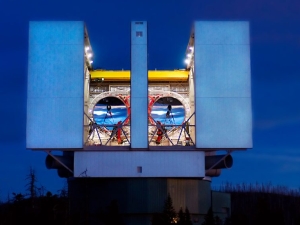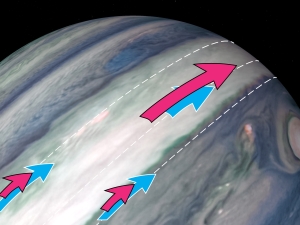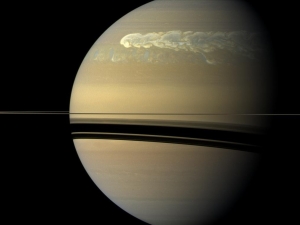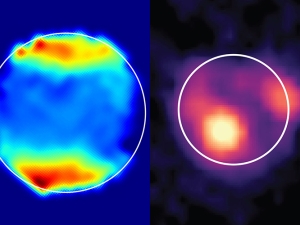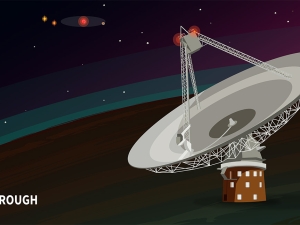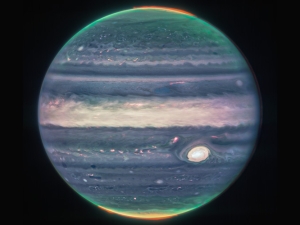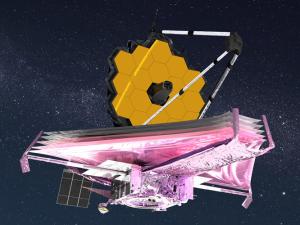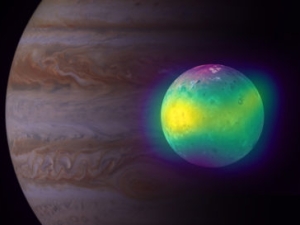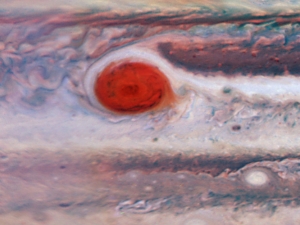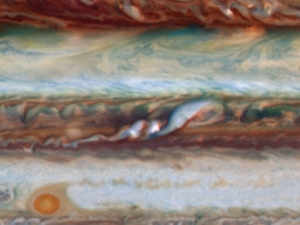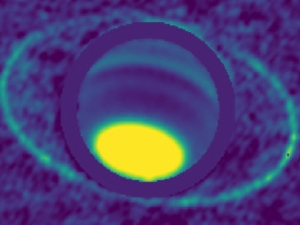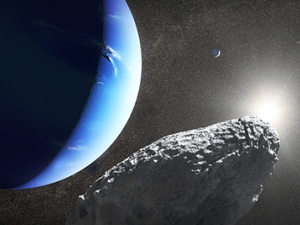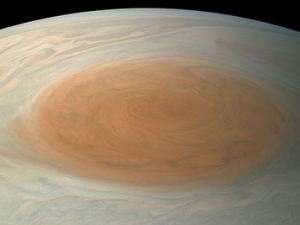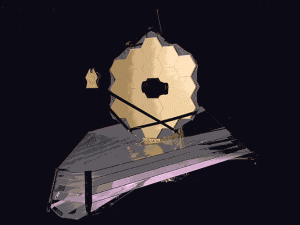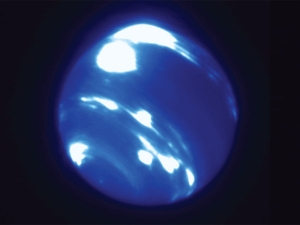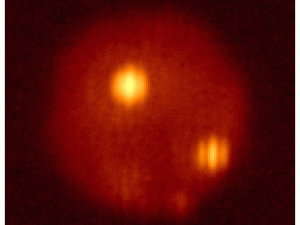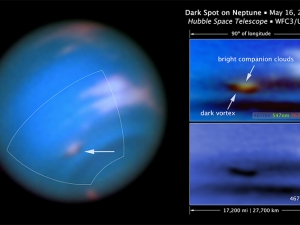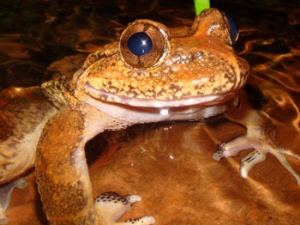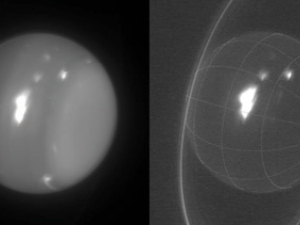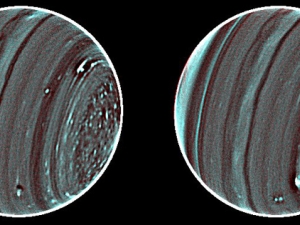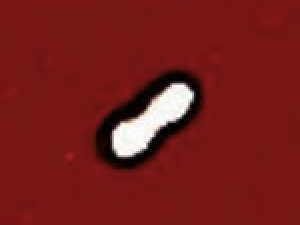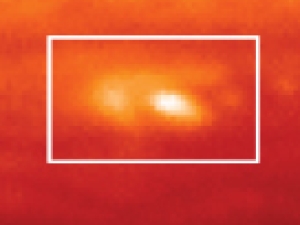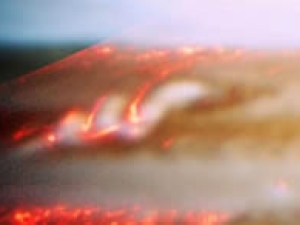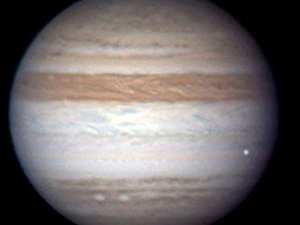

Research Expertise and Interest
radio, planetary science, infrared, observations
Research Description
Professor de Pater's research interests include: infrared observations using adaptive optics of, e.g., Io, Titan, Jupiter, Uranus, Neptune, and planetary rings; radio observations of the giant planets' atmospheres and Jupiter's magnetosphere; comets; TAOS, the Taiwan American Occultation Survey of Kuiper Belt objects in the outer Solar System.
In the News
With New, Sharper Optics, Arizona Telescope Captures Rare Images of Jupiter’s Moon Io
Webb Telescope Discovers Intense Jet Stream in Jupiter’s Atmosphere
Hundred-year Storms? That's How Long They Last on Saturn.
James Webb Space Telescope Sees Jupiter Moons in a New Light
When ET Calls, Can We Be Sure We’re Not Being Spoofed?
Surprising Details Leap Out in Sharp New James Webb Space Telescope Images of Jupiter
Berkeley Astronomers to Put New Space Telescope Through Its Paces
Three Faculty Named 2022 Fellows of American Astronomical Society
Active volcanoes feed Io’s sulfurous atmosphere
UC Berkeley team probes violent storms, lightning on Jupiter
Storms on Jupiter are disturbing the planet’s colorful belts
Astronomers see “warm” glow of Uranus’s rings
Is Neptune’s newest moon a chip off the old block?
Looking for water in Jupiter’s Great Red Spot
Berkeley astronomers selected to take new space telescope for a spin
Two UC Berkeley astronomers are eagerly awaiting the spring 2019 launch of the James Webb Space Telescope, havi
Twilight observations reveal huge storm on Neptune
Waves of lava seen in Io’s largest volcanic crater
‘Dark vortex’ confirmed on Neptune
New images obtained by the Hubble Space Telescope confirm the presence of a “dark vortex” in the atmosphere of Neptune, a rare type of feature that can persist for years.
New radio map of Jupiter reveals what’s beneath colorful clouds
Astronomers using the upgraded Karl G. Jansky Very Large Array in New Mexico have produced the most detailed radio map yet of the atmosphere of Jupiter.
Amateur, Professional Astronomers Alike Thrilled by Extreme Storms on Uranus
The normally bland face of Uranus has become increasingly stormy, with enormous cloud systems so bright that for the first time ever, amateur astronomers are able to see details in the planet’s hazy blue-green atmosphere.
Keck observations reveal complex face of Uranus
The planet Uranus, known since Voyager’s 1986 flyby as a bland, featureless blue-green orb, is beginning to show its face. By using a new technique with the telescopes of the Keck Observatory, astronomers have created the most richly detailed, highest-resolution images ever taken of the giant ice planet.
How Kleopatra got its moons
The asteroid Kleopatra was first seen as a bright dot in the asteroid belt in 1880, but only in 2000 was it found to have a highly elongated, dogbone shape. UC Berkeley and French astronomers have now found two moons orbiting the asteroid, newly named Alexhelios and Cleoselene after the twins of Queen Cleopatra VII and Mark Antony.
New evidence that asteroid, not comet, struck Jupiter in 2009
Jupiter gets its stripe back
Astronomers using three telescopes atop Mauna Kea in Hawaii have recorded the return of a unique belt on Jupiter that periodically fades from dark brown to white. It's most recent fade-out started earlier this year, but November observations show the brown returning. It appears that reflected sunlight off high elevation clouds of ammonia ice have been blocking our view of the darker clouds below.
Amateur astronomers track asteroids as they impact Jupiter
In 1994, amateur astronomers discovered the comet Shoemaker-Levy 9 that made a dramatic impact on the planet Jupiter. They have found three small asteroid impacts on the planet since then — the most recent in August — providing helpful information for astronomers trying to assess the danger from near-Earth asteroids.
Featured in the Media
Sunspots generate clouds on Neptune.
A team of scientists including astronomy professor Imke de Pater has discovered water clouds deep inside the Great Red Spot -- a centuries-old storm -- on Jupiter. The finding offers new insight into how Jupiter evolved, and suggests that the planet may have moved to its present location, raising new questions about the solar system. "Based upon all the exoplanets now known, it appears as if planets may form at a different place and then migrate in and/or out to where we see them today," Professor de Pater says. "So what happened in our solar system? Did Jupiter form beyond where Neptune is today?" For more on this, see our press release at Berkeley News. Stories on this topic appeared in dozens of sources, including MSN Australia, Innovations Report (Germany), Iran Daily, This is Money (UK), Inquisitr, and WT News.

